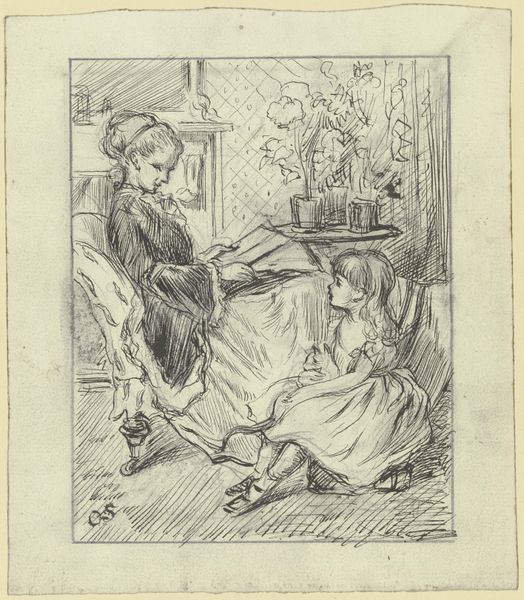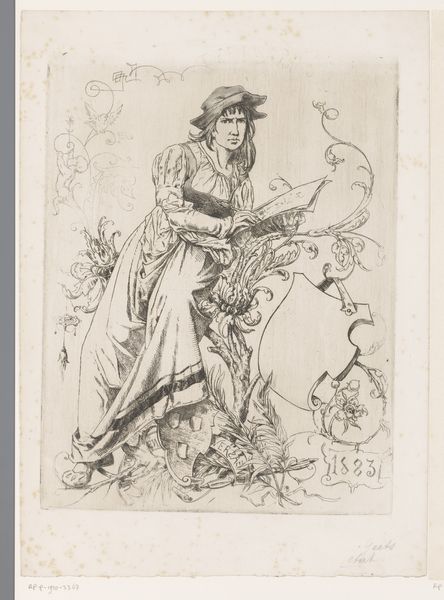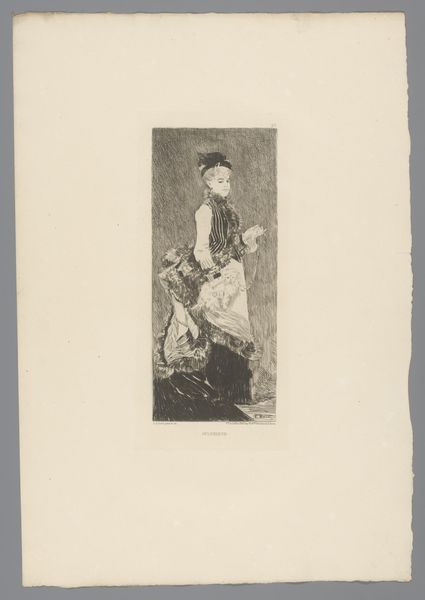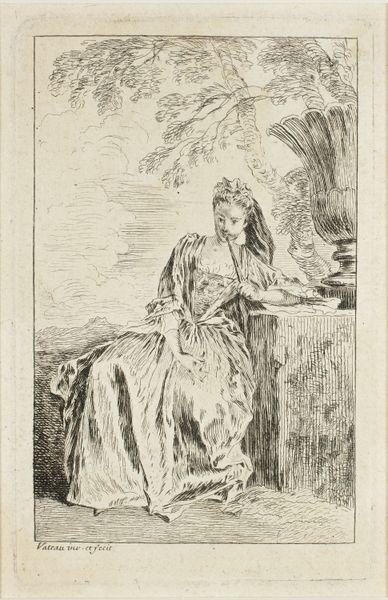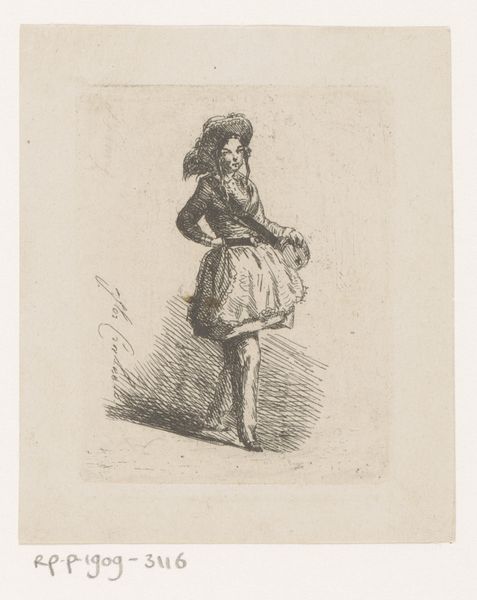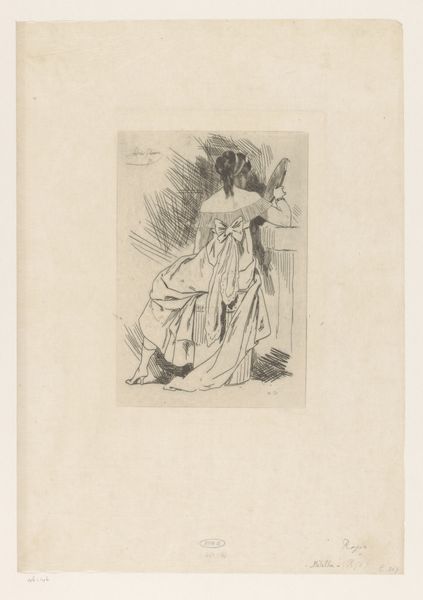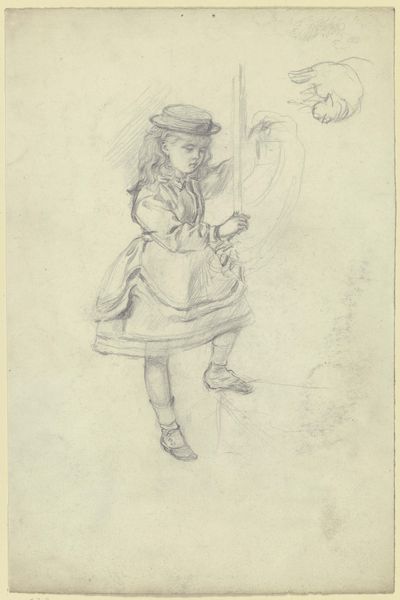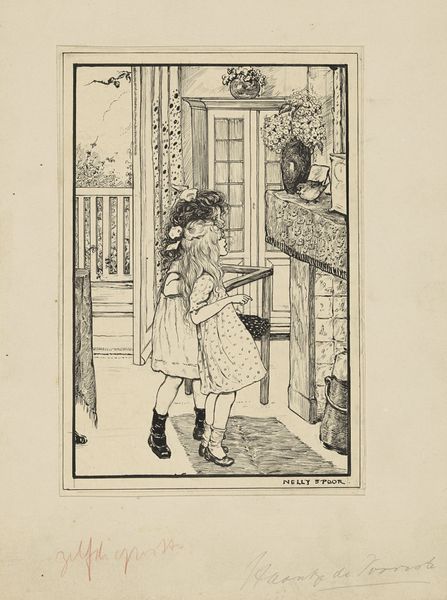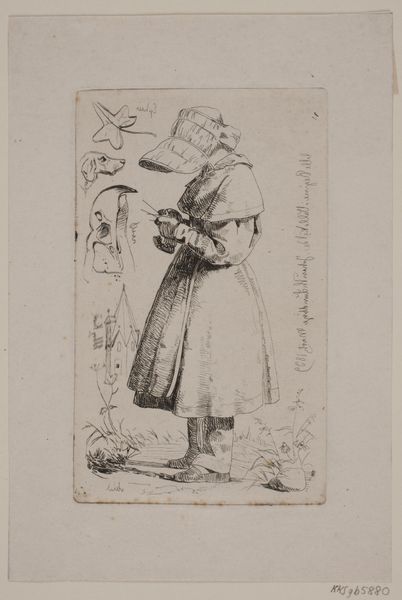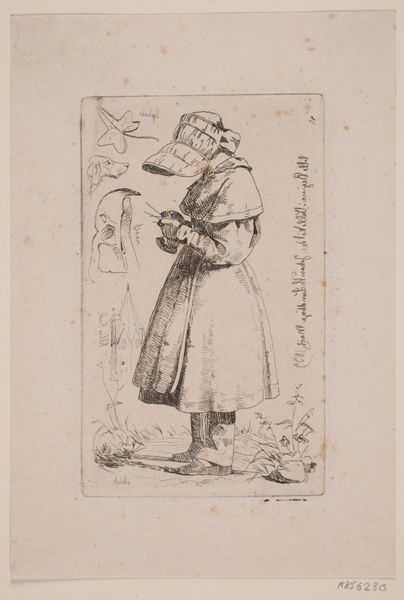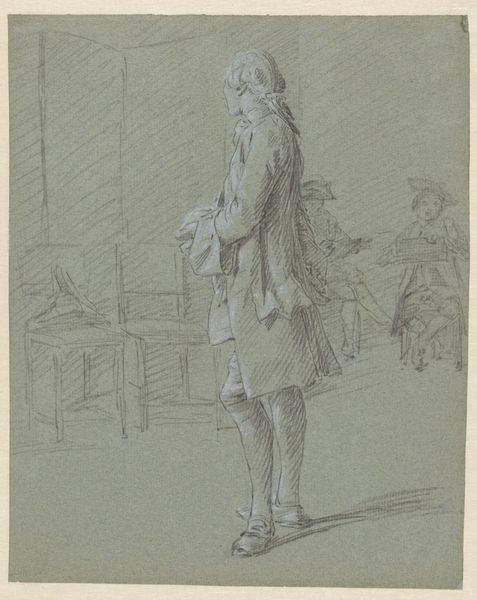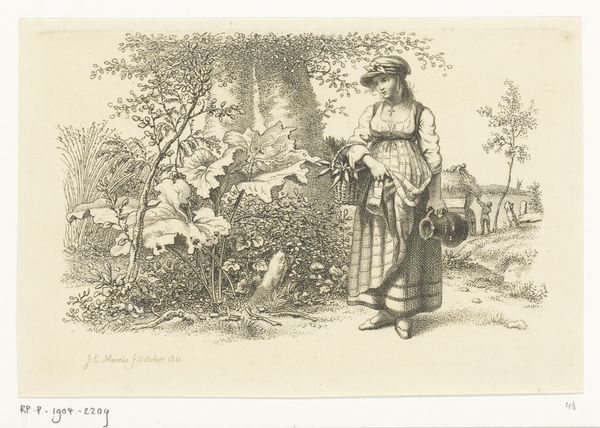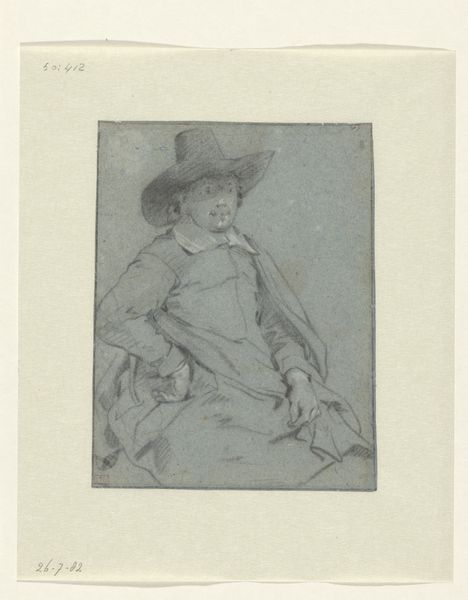
Copyright: Public Domain
Curator: Here we have Otto Scholderer’s drawing from 1873, titled "_As proud as a peacock_," or "_Stolz wie ein Pfau_" in German. It’s rendered in pencil and ink on paper. Editor: The first thing that strikes me is the whimsical charm—almost fairytale-like. There’s a little girl dressed in elaborate attire standing beside a peacock, which is even more flamboyant. Curator: Indeed, and understanding the era is key. The late 19th century saw shifting societal structures reflected in artistic representations of children. They were no longer merely miniature adults, but figures imbued with innocence and vulnerability. Scholderer, I believe, subtly critiques this ideal. Editor: I see that in the attire. That little girl isn't wearing children’s clothes. That's a frilly bustle and a small hat, miniature versions of what an adult lady would wear. And is she holding an umbrella, like a cane? The artist is hinting that she's dressing beyond her years, almost comically. Curator: Precisely! The peacock, a symbol of vanity and pride, further underscores this critique. It’s as if Scholderer is commenting on the performative nature of childhood within certain social strata. Look at the peacock, though. Its plumage fans out, drawing attention. Editor: It also carries echoes of earlier symbolic traditions. The peacock has, for centuries, represented beauty, immortality, and even resurrection in certain Christian iconography, while pride remains a significant part of its associations in fables and secular contexts. Curator: Scholderer layers these different valences, prompting us to consider what pride and performance mean in a child's world. Is it imposed, emulated, or genuinely felt? And does the girl understand what the peacock means to others? Editor: I'm drawn to the subtle details: the texture of the stone balustrade and the carefully drawn lines defining the girl's posture and expression. The slight smirk might signify her awareness of being observed, or the sense of pretense about growing up too fast. It invites closer inspection and reflection about childhood and gendered performance. Curator: Exactly. Ultimately, this seemingly simple drawing holds layers of commentary about identity, societal expectation, and the burdens and contradictions placed upon young individuals, even a century and a half ago. Editor: A wonderful artwork that rewards spending time with it—bringing multiple interpretations to the surface through symbols of the animal kingdom and reflections on selfhood.
Comments
No comments
Be the first to comment and join the conversation on the ultimate creative platform.
